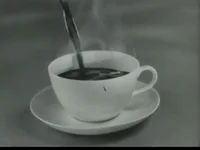New
algorithm determines ideal caffeine dosage and timing for alertness
American Academy of Sleep Medicine
 According to a recent study, a newly
developed algorithm may be the key to optimizing alertness with caffeine.
According to a recent study, a newly
developed algorithm may be the key to optimizing alertness with caffeine.
Caffeine is the most widely consumed
stimulant to counter the effects of sleep loss on neurobehavioral performance.
However, to be safe and most effective, it must be consumed at the right time and in the right amount.
This study proposed an automated optimization algorithm to identify safe and effective caffeine-dosing strategies that maximize alertness under any sleep-loss condition.
However, to be safe and most effective, it must be consumed at the right time and in the right amount.
This study proposed an automated optimization algorithm to identify safe and effective caffeine-dosing strategies that maximize alertness under any sleep-loss condition.
"We found that by using our algorithm, which determines when and how much caffeine a subject should consume, we can improve alertness by up to 64 percent, while consuming the same total amount of caffeine," said principal investigator and senior author Jaques Reifman, PhD.
"Alternatively, a subject can reduce caffeine consumption by up to 65 percent and still achieve equivalent improvements in alertness."
Reifman is a senior research
scientist and director of DoD Biotechnology High Performance Computing Software
Applications Institute and the Telemedicine and Advanced Technology Research
Center at the U.S. Army Medical Research and Materiel Command in Ft. Detrick,
Maryland.
The study used a validated
mathematical model, which predicts the effects of sleep loss and caffeine on
psychomotor vigilance task (PVT) performance and combined it with a
computationally efficient optimization algorithm to determine when and how much
caffeine to consume to safely maximize alertness during sleep loss.
The algorithm takes a user-provided sleep/wake schedule and maximum allowed caffeine as inputs and provides a caffeine-dosing strategy as the output.
The algorithm takes a user-provided sleep/wake schedule and maximum allowed caffeine as inputs and provides a caffeine-dosing strategy as the output.
The algorithm was assessed by
computing and comparing dosing strategies for four previously published
experimental studies of sleep loss.
For each study, two dosing strategies were computed -- one which enhanced the predicted PVT performance using the same total amount of caffeine as in the original studies, and another which achieved an equivalent level of performance as in the original studies using a lower amount of caffeine.
For each study, two dosing strategies were computed -- one which enhanced the predicted PVT performance using the same total amount of caffeine as in the original studies, and another which achieved an equivalent level of performance as in the original studies using a lower amount of caffeine.
Compared to the original dosing
strategies used in the studies, the U.S. Army's algorithm identified strategies
that enhanced neurobehavioral performance by up to 64 percent, or reduced
caffeine consumption by up to 65 percent.
According to the authors, these results suggest that the algorithm can tailor the timing and amount of caffeine to the particular sleep/wake schedule of each study condition to maximize its benefits.
According to the authors, these results suggest that the algorithm can tailor the timing and amount of caffeine to the particular sleep/wake schedule of each study condition to maximize its benefits.
"Our algorithm is the first
quantitative tool that provides automated, customized guidance for safe and
effective caffeine dosing to maximize alertness at the most needed times during
any sleep-loss condition," said Reifman.